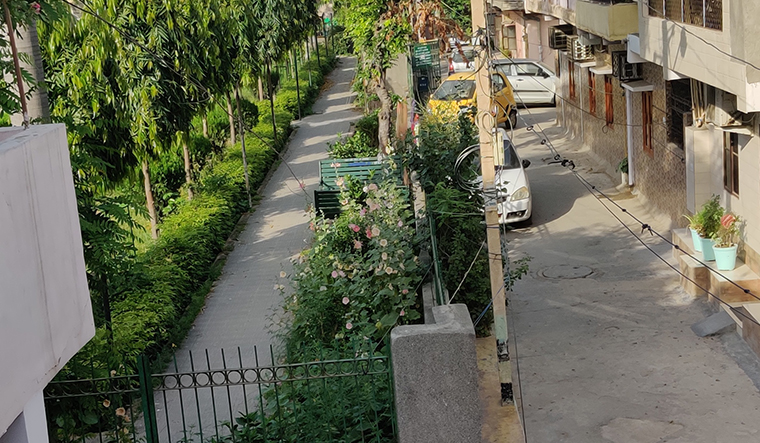Vikas Valmiki has never seen a quieter, peaceful Dilshad Garden for the 35 years of his life that he has spent in the bustling, East Delhi neighbourhood. A designer in an advertising firm, he is particularly charmed by rows of shuttered shops along wide open roads.
But something is odd even in the empty quietude with one singular image stuck in his head. “The rope around the grocery shops is still placed at a distance of two metres, so people do not come very close to it,” he says. “People have not resumed their normal lives here.”
On April 11, Delhi’s Health Minister Satyendar Jain declared Dilshad Garden a coronavirus-free area, after the successful implementation of Operation Shield—a Bhilwara model-like containment strategy. Being Delhi-NCR’s first containment zone, Dilshad Garden has not reported any new Covid-19 cases in the last two weeks. The first case in the area was a 38-year-old woman who returned from Saudi Arabia on March 10. Seven positive cases followed, including the source’s brother, mother and two daughters.
As part of Operation Shield, all the 81 people the source had come into contact with were immediately put under quarantine. Close to 123 medical teams screened more than 15,000 people living in 4,032 houses in the area and sent off coronavirus suspects into hospitalisation. Random testing of residents was also done.
Strict curfew and sealing were imposed in the area where police barricades did not allow the entry of vehicles, pedestrians, and even essential services. Announcements were constantly blared via microphones, urging residents to follow lockdown rules and come forth if they had been in contact with the source’s family.
Valmiki says his neighbours stocked up on essentials wisely. Most did not feel the need to venture out in the week in which the sealing was extremely tight. “In fact, even when the area was sealed off completely, we could still go down to buy fruits and vegetables. But the most important thing was that people were extremely cooperative and followed the rules,” he says. “If they wanted to buy milk, they would come with their own containers. No one had access to newspapers for a few days; even the fruits and vegetables carts stopped coming. The grocery shops would not remain open for more than four hours and the rope around these shops ensured people stayed at a distance. There was no crowding around.”
But now that the sealing has been relaxed, Valmiki is worried about the continuing presence of ropes around shops. He keeps referring to the source as “that Saudi woman”. The empty streets reinforce the months of uncertainty ahead. Suddenly his upbeat manner changes to a note of wariness: “There are new cases in China again. I do not know how long this curfew will last.”


